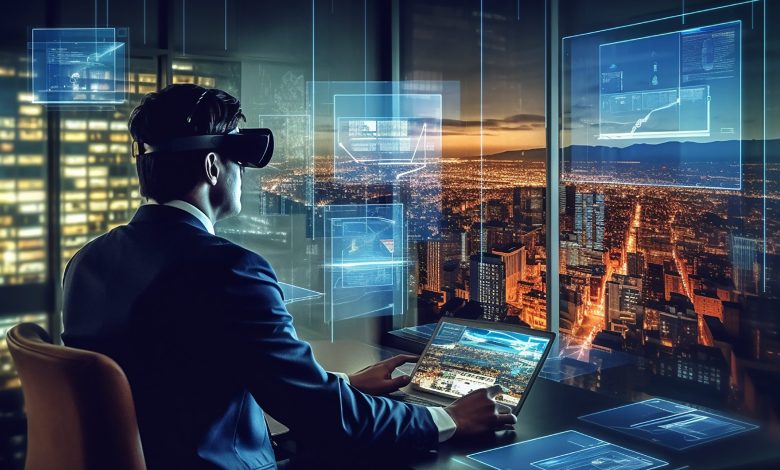Computer Vision Programming: A Beginner-Friendly Deep Dive

Computer vision programming has become one of the most exciting areas of artificial intelligence, bridging the gap between how humans see the world and how machines interpret it. From unlocking your phone with facial recognition to detecting defects on an assembly line, computer vision is everywhere—and learning how it works is no longer limited to researchers in labs. It’s now an accessible, fast-growing skill that developers, data scientists, and even entrepreneurs are embracing.
What Exactly Is Computer Vision Programming?
Computer vision is the science of teaching computers to “see” and process images or videos much like humans do. Programming in this field involves writing code and building models that can:
- Detect objects in a photo or video.
- Recognize patterns such as shapes, faces, or handwriting.
- Classify and label images into categories.
- Track movement in real time (think self-driving cars).
- Enhance or transform images (medical scans, satellite imagery, etc.).
In essence, you’re giving machines the ability to interpret visual input and then take meaningful actions based on that data.
Why Computer Vision Matters Right Now
We’re living in a visual-first digital world. Social media, e-commerce, healthcare, security, transportation—almost every industry has a use case for vision-driven systems. A few standout examples:
- Retail: Smart checkout systems that recognize products instantly.
- Healthcare: AI models analyzing X-rays or MRI scans faster than radiologists.
- Autonomous Driving: Cars identifying pedestrians, road signs, and traffic lights in milliseconds.
- Agriculture: Drones monitoring crop health using image recognition.
The demand for people who understand how to program these systems is skyrocketing.
Key Tools & Frameworks in Computer Vision Programming
When diving in, you don’t start from scratch—you use libraries, frameworks, and pre-built models that simplify complex math into practical code. Some of the most popular ones include:
- OpenCV: The go-to open-source library for real-time computer vision.
- TensorFlow & PyTorch: Deep learning frameworks widely used for building image recognition models.
- Keras: A beginner-friendly layer on top of TensorFlow for easier experimentation.
- Scikit-image: Python toolkit for image processing tasks.
- YOLO (You Only Look Once): A state-of-the-art algorithm for real-time object detection.
Core Concepts You’ll Encounter
To understand the “how,” it’s worth knowing some of the basic building blocks behind the scenes:
- Image Representation: Images are stored as arrays of pixels (grids of numbers).
- Filtering & Transformations: Sharpening, blurring, resizing—basic operations that manipulate image data.
- Feature Extraction: Finding edges, corners, or patterns in an image.
- Neural Networks & CNNs: Convolutional Neural Networks are the backbone of modern vision programming, designed to detect complex features layer by layer.
- Transfer Learning: Using pre-trained models (like ResNet or VGG) and adapting them to your custom dataset.
Getting Started: Step-by-Step Roadmap
If you’re new, here’s a practical path you can follow without feeling overwhelmed:
- Learn the Basics of Python.
Nearly all popular libraries are Python-friendly, so having Python skills is a must. - Experiment with OpenCV.
Start small—load an image, convert it to grayscale, and detect edges. - Move Into Deep Learning.
Learn how convolutional neural networks work, then build your first image classifier with TensorFlow or PyTorch. - Try a Real Project.
Examples: cat vs. dog classifier, number recognition using MNIST, or a face detection system. - Understand Real-Time Applications.
Use live webcam feeds and YOLO to detect objects instantly. - Explore Advanced Use Cases.
Dive into segmentation, gesture recognition, or reinforcement learning with vision.
Challenges in Computer Vision Programming
Like any cutting-edge field, there are hurdles:
- Data Dependency: You need large, well-labeled datasets for accurate models.
- Hardware Needs: Training deep networks often requires GPUs.
- Bias & Accuracy: A poorly trained model can misclassify, sometimes with real-world consequences.
- Interpretability: Understanding why a model made a decision is still tough.
But these challenges are also opportunities for innovation—startups and researchers are constantly improving accuracy, efficiency, and fairness.
Real-World Examples to Inspire You
Here are some striking applications of computer vision that are already changing industries:
- Amazon Go Stores: Cameras + AI let customers grab items and leave, with automatic billing.
- Tesla’s Autopilot: Uses vision systems to navigate roads.
- Instagram Filters: Augmented reality masks and effects track your face in real time.
- Medical AI: Google’s DeepMind analyzing eye scans to detect diseases early.
Seeing these use cases in action can help you imagine projects of your own.
Expert Tip
“The beauty of computer vision programming isn’t just in building futuristic AI systems—it’s in solving very real, very human problems. Start small, be patient with the math, and focus on projects that excite you. That curiosity will fuel your learning curve.” — A senior AI engineer I once studied under
Final Thoughts
Computer vision programming is no longer a niche skill—it’s a core pillar of AI that shapes the apps, devices, and experiences we interact with daily. Whether you’re a developer looking to upskill, a student testing the AI waters, or an entrepreneur exploring automation, getting hands-on with vision programming opens doors to innovation.
Start with the basics, play with tools like OpenCV, and gradually build up to deep learning models. Every project you attempt will sharpen your skills and bring you closer to building something impactful.



